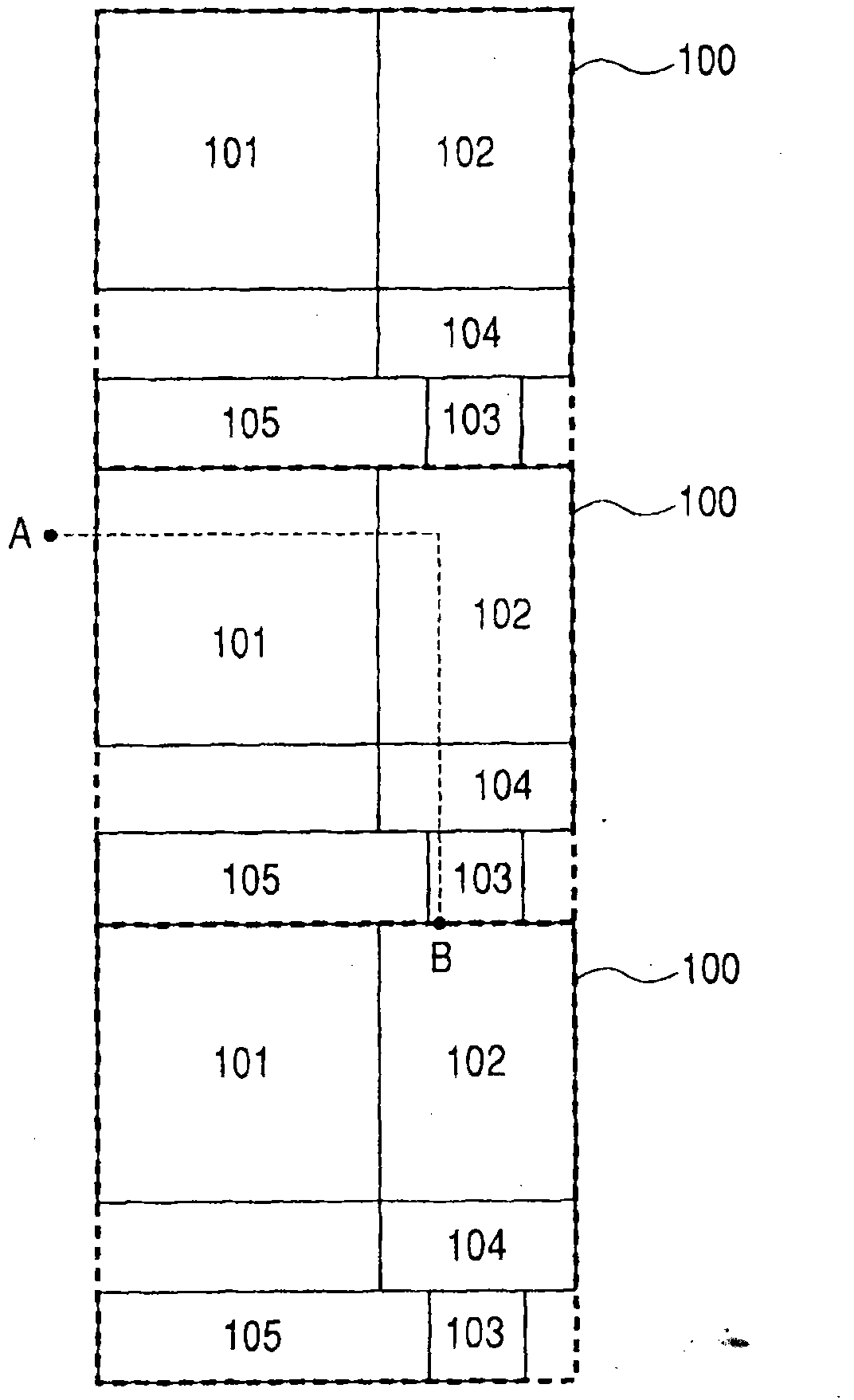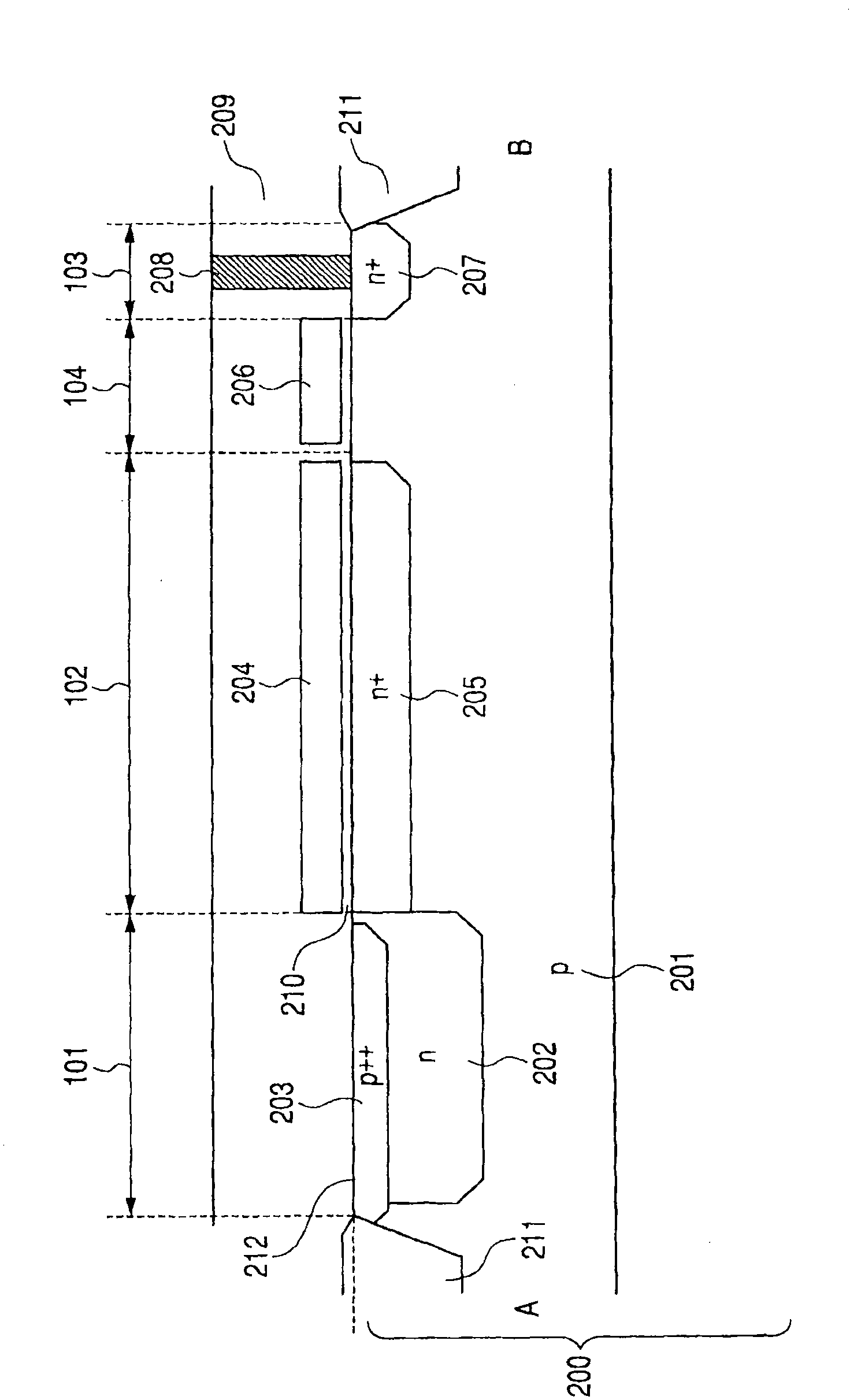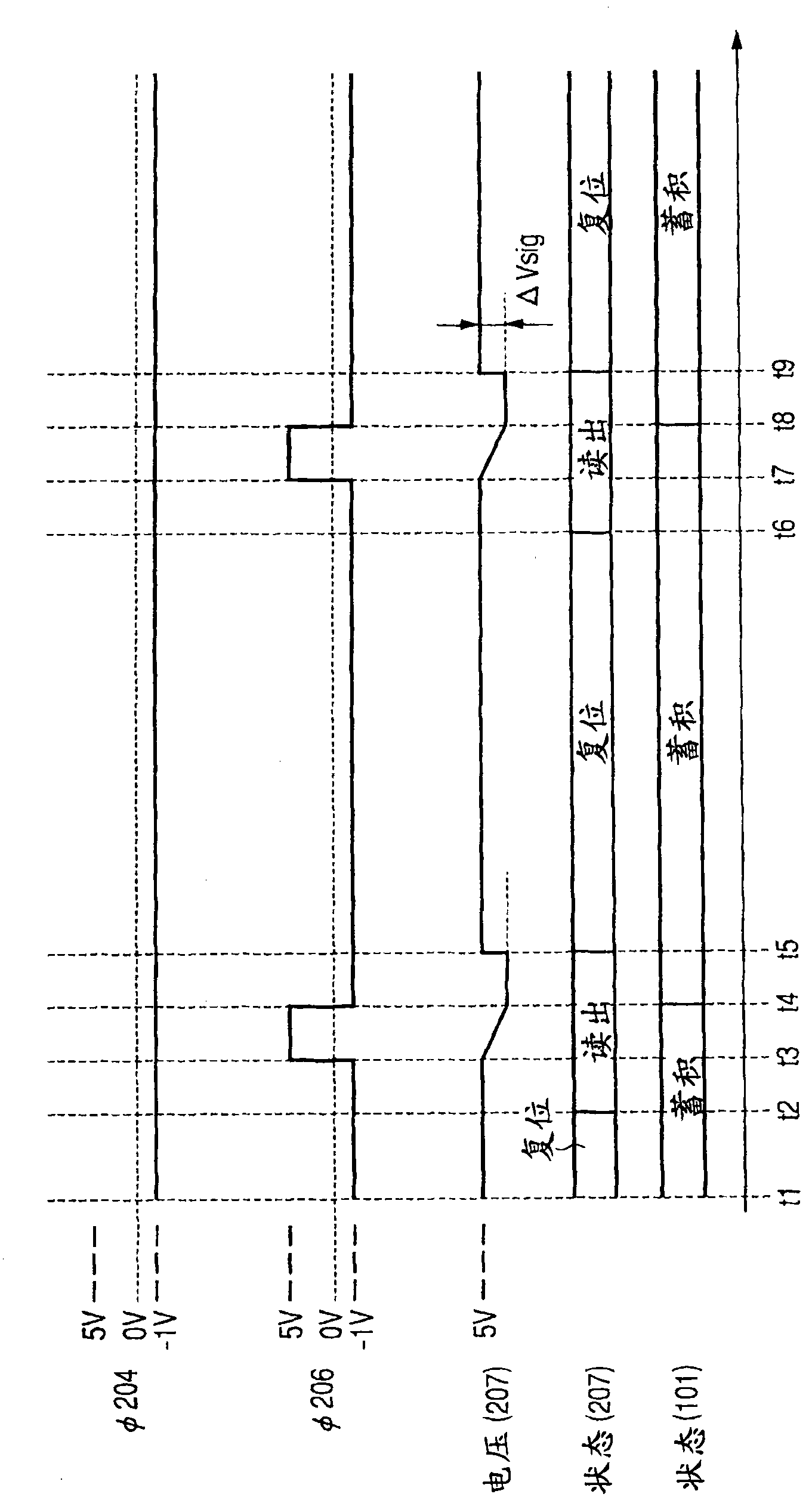Photoelectric conversion device and imaging system using the same
A technology of photoelectric conversion device and photoelectric conversion element, which is applied in parts of TV system, radiation control device, color TV parts, etc., can solve problems such as block breakdown, and achieve the effect of improving transmission efficiency
- Summary
- Abstract
- Description
- Claims
- Application Information
AI Technical Summary
Problems solved by technology
Method used
Image
Examples
no. 1 example
[0027] First, by using figure 1 A pixel to which the present invention is applicable is described. figure 1 is a schematic plan view showing elements as blocks. The pixel 100 includes a photoelectric conversion element 101, a charge storage portion 102, a floating diffusion region 103, and a charge transfer portion 104. The other elements are simply indicated collectively by reference numeral 105 . Other elements include, for example, MOS transistors for amplification and MOS transistors for reset, and may have any detailed configuration. Also, an element isolation region is omitted. A pixel is a minimum repeating unit having at least one photoelectric conversion element, and the pixels 100 are arranged one-dimensionally or two-dimensionally to form an imaging area. figure 1 An array of three pixels 100 is shown. figure 2 A cross-sectional view of such a pixel 100 taken along line A-B is shown.
[0028] figure 2 is along figure 1 A schematic cross-sectional view take...
no. 2 example
[0040] The difference between this embodiment and the first embodiment is that the control signal Also, in the configuration of the first embodiment, the first semiconductor region and the fourth semiconductor region differ in the relationship between their potentials. Figure 5 shows a timing diagram of operation, and, Figure 6 schematically shows with when according to Figure 5 The potential corresponding to the signal charge in each semiconductor region when driving is performed. Figure 5 and image 3 correspond, Figure 6A , Figure 6B , Figure 6C and Figure 6D and Figure 4A , Figure 4B , Figure 4C and Figure 4D correspond, and similar functions are denoted by similar symbols, and descriptions thereof are omitted.
[0041] First, in Figure 5 , the control signal is not always low, and goes high at t3 (and at t7). control signal When the signal charge from the photoelectric conversion element 101 is transferred to a high level, it is possible to s...
no. 3 example
[0047] The difference between this embodiment and the second embodiment is that the control signal The low level and the control signal The low level is different. In this embodiment, the control signal The low level is set to -3V, while the control signal The low level is set to -1V. That is, the low level of the voltage supplied to the second gate electrode is higher than the low level of the voltage supplied to the first gate electrode. This voltage-to-voltage relationship can increase the breakdown voltage between the second gate electrode 206 and the third semiconductor region 207 . The reason is as follows. The third semiconductor region 207 is set to a high potential at reset. At this time, if a low-level voltage is supplied to the first gate electrode 204 and the second gate electrode 206 , the electric field between the adjacent second gate electrode 206 and the third semiconductor region 207 increases. Then, making the low-level voltage of the second gate ...
PUM
 Login to View More
Login to View More Abstract
Description
Claims
Application Information
 Login to View More
Login to View More - R&D
- Intellectual Property
- Life Sciences
- Materials
- Tech Scout
- Unparalleled Data Quality
- Higher Quality Content
- 60% Fewer Hallucinations
Browse by: Latest US Patents, China's latest patents, Technical Efficacy Thesaurus, Application Domain, Technology Topic, Popular Technical Reports.
© 2025 PatSnap. All rights reserved.Legal|Privacy policy|Modern Slavery Act Transparency Statement|Sitemap|About US| Contact US: help@patsnap.com



